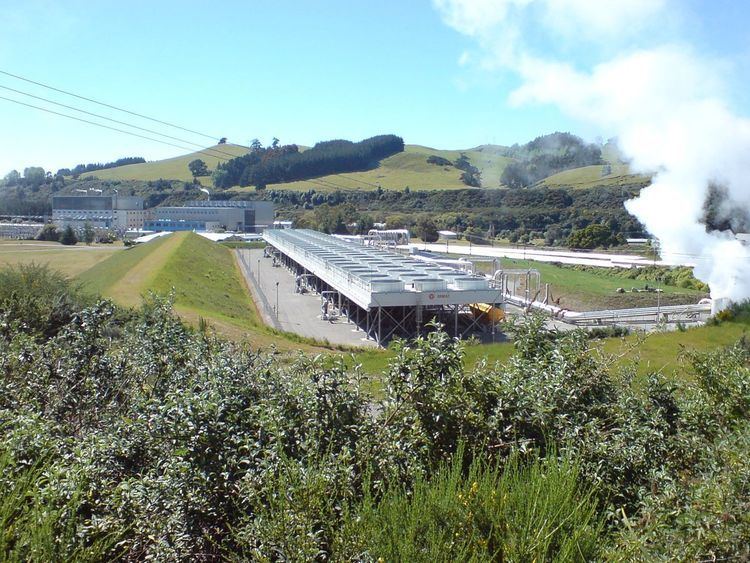 | ||
Renewable electricity in New Zealand is primarily from hydropower. In 2015, 83% of the electricity generated in New Zealand came from renewable sources. In September 2007, former Prime Minister Helen Clark announced a national target of 90% renewable electricity by 2025, with wind energy to make up much of that increase.
The resource consent process has favoured non-renewable energy projects. This century, thermal projects have received consents (Rodney, Stratford) while several renewable energy projects have had consent applications declined (Awhitu, Mokau hydro, Mount Cass, Project Hayes, Te Waka, Waitahora).
Annual electricity generation
A glance at these figures shows that for the stated target to be attained, current thermal generation will have to be decommissioned and not replaced. Even if the annual total consumption doubles from the 2005 figure ( as it did from 1975 to 2005 ), with all additional generation met by non-thermal means, a static thermal generation of 14,305 on a total of 83,340 is still 17 percent. The most likely candidate for decommissioning would be the 1000 MW Huntly power station, a coal and gas power station that was commissioned in 1983.
While there are some non-technical barriers to the widespread use of renewables, global warming concerns coupled with high oil prices and increasing government support are driving increasing growth in the renewable energy industries.
To boost the "renewables" ratio, geothermal power is often counted as renewable, even though the geothermal heat reservoirs are depleted (observably so at Wairakei, the longest-running), and, they are not emissions-free. For example, the Ngawha geothermal field emits an unusually high amount of CO2 (350 tonnes CO2 per GWh ) and the geothermal fields plus natural hot springs draining to the Waikato river deliver sufficient arsenic to render the water unsafe to drink without special treatment. Re-injection of the waste geothermal fluid can reduce these problems (even extending the life of the field), but involves additional expense.
